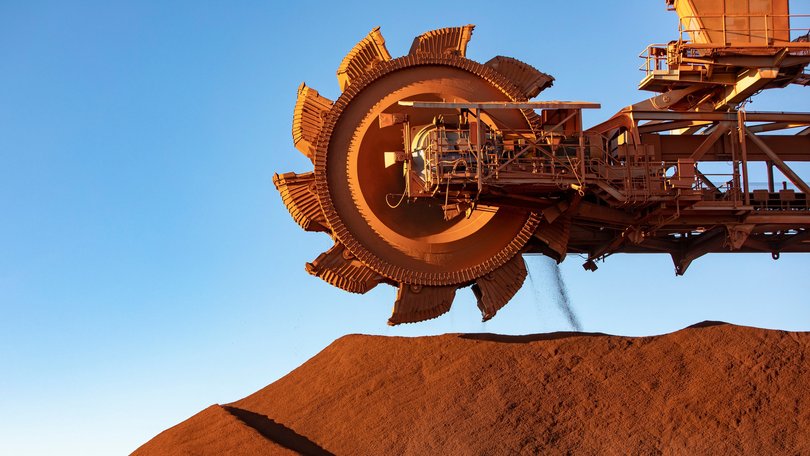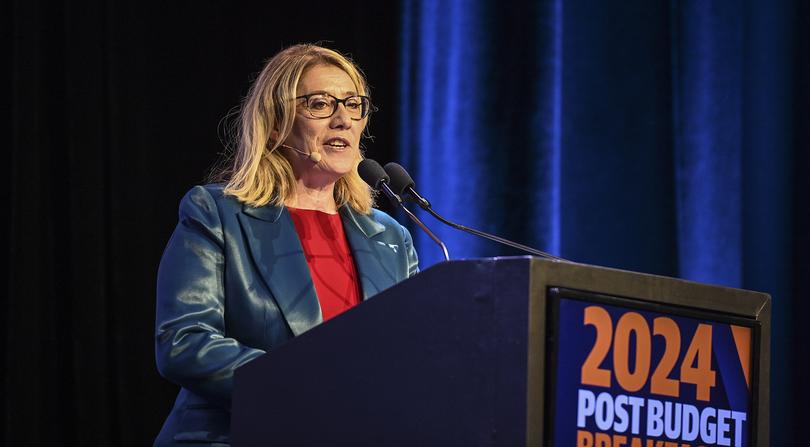Stark warnings in State and Federal Budgets that spell trouble for cash cow commodity iron ore

The iron ore bonanza that has underwritten both the State and the nation since the start of the COVID-19 pandemic may soon be over, according to stark warnings contained in both the WA and Commonwealth Budgets.
Windfall tax receipts from WA’s iron miners have been a major contributor to the two successive surpluses delivered by Federal Treasurer Jim Chalmers.
At the same time, royalties account for a significant chunk of the $23 billion in combined surpluses booked in WA over the past six years.
Sign up to The Nightly's newsletters.
Get the first look at the digital newspaper, curated daily stories and breaking headlines delivered to your inbox.
By continuing you agree to our Terms and Privacy Policy.But a slowdown in China means the party is now tipped to draw to a rapid close, with an unwinding of commodity prices — particularly iron ore — identified as major risks to both the State and national balance sheets.
Both the Commonwealth and Cook governments use very conservative iron ore price assumptions — the WA Budget pencils in an average price of just $US75 per tonne in 2024-25 — but have become accustomed to those estimates being shattered.
Treasurers tend to err on the side of the bears when it comes to forward pricing commodities. After all, Australia is still predominantly a nation of diggers and shippers and global markets can turn quickly on geopolitical shocks that rattle our trading partners. Those risks could leave gapping holes in Budgets if prices are skewed too far to the upside.
Despite the gloomy outlook in her Budget papers, WA Treasurer Rita Saffioti said she remained “cautiously optimistic over our iron ore prices”.
“There’s a lot of volatility in relation to commodity prices, that’s why we budget conservatively,” she said.
“It’s very hard to predict what happens in relation to property markets, infrastructure provision — there’s so many X-factors out there that impact the demand for commodities.”

For each $US1 the average annual iron ore price beats the $US75/t assumption in the WA Budget, the State collects an additional $94 million in royalties.
However, the opposite is also true — any fall below $US75/t threatens to strip hundreds of millions out of the Budget.
A significant fall in the iron ore price, which is hovering around $US115/t, would draw the curtains on a bumper four-year run that has delivered billions in bonus revenue to both the State and Federal governments.
The Federal Budget released on Tuesday notes “steel demand in China has likely peaked and a recovery in the supply of iron ore and metallurgical coal has put downward pressure on price”.
“Chinese imports of iron ore reached record levels in 2023 in line with near-record steel production,” the document reads.
“This was due to strong demand from investment in infrastructure, expanding industrial capacity and exports, which offset weak demand from property investment.
“However, as property sector demand is expected to remain weak, with residential constructions starts in China having fallen to their lowest level in over 15 years, steel production has likely passed its peak and is expected to ease in 2024.”
The WA Budget, released last Thursday, identified the same trends.
It highlights the price of iron ore dropped from $US144/t at the start of the year to $US100/t in April, reflecting “weak downstream steel demand and rising iron ore inventory levels in China”.
While iron ore has since staged a minor recovery, WA Treasury expects Chinese steel demand to “track sideways” for the next six months before “moderating over the outlook period”.
“The outlook for China’s property sector remains downbeat,” the Budget said.
“Recent data indicates that new property sales fell 24.9 per cent year-on-year in January and February, while property completions, a primary focus for authorities, contracted by 21.1 per cent year-on-year during the same period.
“The indicator most aligned with steel and iron ore demand — floor space of new construction starts — has fallen by more than 50 per cent in annual level terms since late 2020.”
Providing some ballast to the iron ore price has been significant infrastructure investment from Beijing, as well as growth in Chinese manufacturing of steel-intensive products like wind turbines and cars.
But that is offset by downward pressure in the form of falling steel output in the US, Russia and South Korea.
The WA Budget also identified rising iron ore production both domestically and in Brazil and West Africa.
“Iron ore production in Western Australia is projected to rise from 862 million tonnes in 2023-24 to 886mt in 2024-25 and then remain relatively stable at this level across the outlook period,” the Budget said.
“This increase primarily reflects a ramp-up in production from Fortescue’s Iron Bridge project and new production coming online from Mineral Resources Limited’s Onslow project over the next year.”
The Simandou project in Guinea – which counts Rio Tinto as a major investor and has been nicknamed the “Pilbara killer” – is also expected to ramp up to full production over the next four years.
Originally published as Stark warnings in State and Federal Budgets that spell trouble for cash cow commodity iron ore
